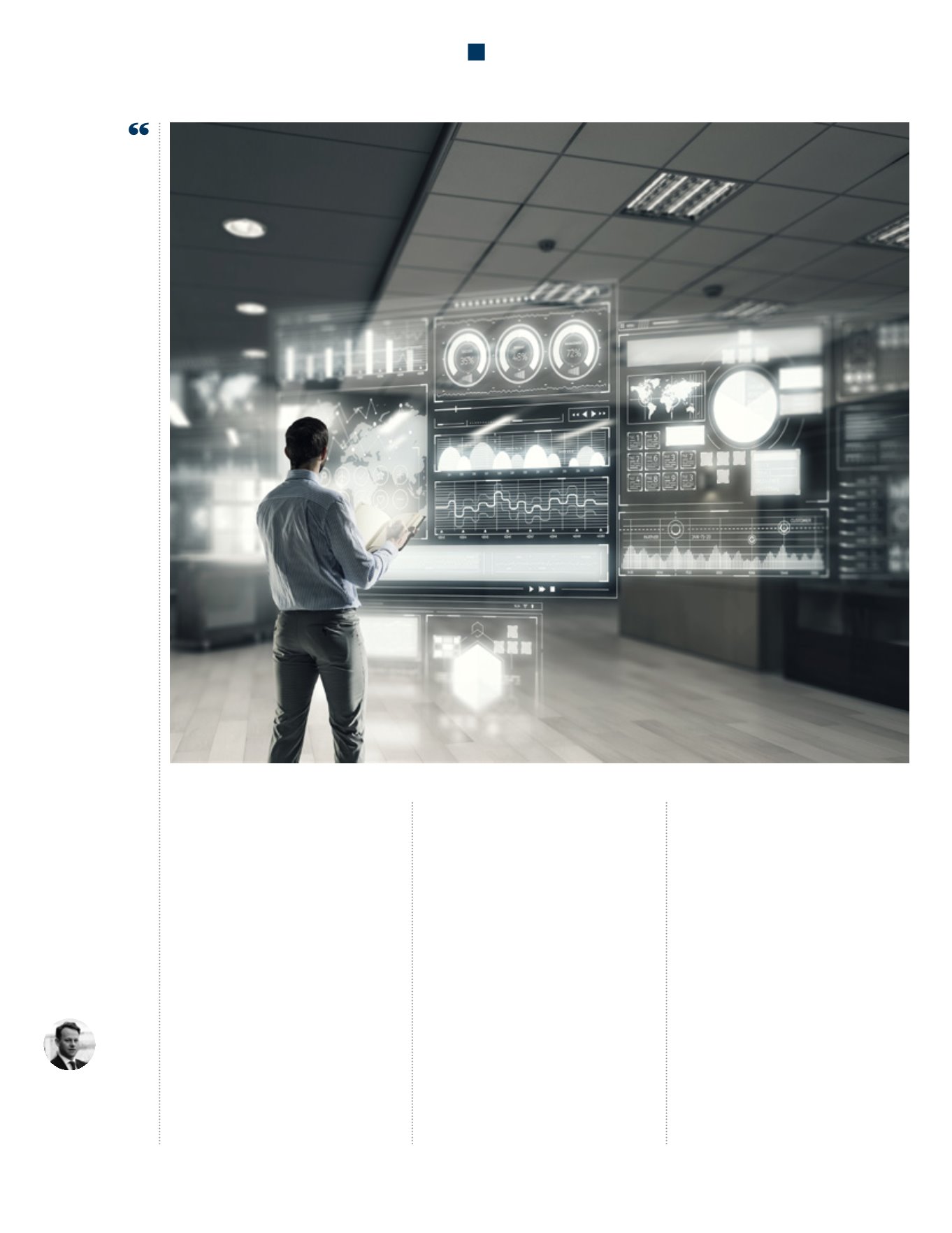

I
ncreasingly, ‘digital automation’
is finding its way into the ‘macro’
section of consultants’ reports.
Depending on one’s perspective it
might be listed as an opportunity or
a threat. However, all too often these
reports are then put on shelves in
favour of business as usual. That would
be a mistake - the fourth industrial
revolution is already upon us. Many
reading this article (maybe me) could
find their jobs significantly changed,
or removed entirely, within the next
five years. As a white collar worker, it
is easy to dismiss such suggestions
as scaremongering. However,
as technology advances, some
knowledge workers have become as
disintermediable as were the artisans
in the first industrial revolution.
Technological revolution is typified
by a sudden breakthrough at the
end of a long wave of more sluggish
change. Each revolution has had
profound impacts for society and the
property industry. First time around
(1760+), this meant the mechanisation
of processes, driven by steam
power. It was largely responsible
for the urbanisation of the UK, and
associated for instance with a boom
of the textile factories in the north of
the England.
The second (1870+) was about
mass production, and the factory
lines popularised subsequently by
Henry Ford and others. Together
with an expansion of the rail system,
new agglomerations and industrial
specialisms were made possible, and
cities exploded. Over a period of just
100 years, London’s population grew
five fold.
The third (1970+) – the only
previous technological revolution in
living memory, was concerned with
the introduction of modern IT and
communication technology, which has
changed the design of offices, and
when combined with globalisation
and consequent deindustrialisation,
focussed our economy on services.
This new wave is about Artificial
Intelligence (AI) and robotics. Its
impacts are not yet known, but we
can take a good guess, based on
the operation of these emerging
technologies. As computer
intelligence increases, so does its
ability to replace increasingly complex
processes. The introduction of the
personal calculator in 1967 might be
seen as the tip of the iceberg. This
was after all just a linear process,
where a simple instruction to a dumb
machine produced a predefined
answer based on a series of logic
gates. New machines have the ability
to learn and spot patterns in the data.
Digital Automation
By Richard
Pickering,
Head of Insight
& Research,
UK & Ireland
As
computer
intelligence
increases,
so does its
ability to
replace
increasingly
complex
processes
CUSHMAN & WAKEFIELD
19
FUTURE OF WORK


















